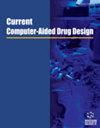Comprehensive Analysis and Experimental Validation of FOXD2 as a Novel Potential Prognostic Biomarker Associated with Immune Infiltration in Head and Neck Squamous Cell Carcinoma
IF 1.6
4区 医学
Q4 CHEMISTRY, MEDICINAL
引用次数: 0
Abstract
Background: The role of Forkhead Box D2 (FOXD2) in head and neck squamous cell carcinoma (HNSC) has never been studied. Object: Our object was to explore the role of FOXD2 in HNSC. Methods: Clinical data for patients with HNSC was obtained from TCGA. Our study examined the atypical expression of FOXD2 in both HNSC and pan-cancer, along with its diagnostic and prognostic implications, as well as the association between FOXD2 expression and clinical characteristics, immune infiltration, immune checkpoint genes, and MSI. Gene set enrichment analysis (GESA) was used to investigate the potential regulation network of FOXD2 in HNSC. We analyze the genomic alterations of FOXD2 in HNSC. GSE13397 and qRT-PCR were used for the validation of FOXD2 expression. Results: FOXD2 was aberrantly expressed in 24 tumors. FOXD2 was significantly up-regulated in HNSC compared to normal head and neck tissue (p < 0.001). High FOXD2 expression was associated with the histologic grade of the patient with HNSC (p < 0.001), lymphovascular infiltration (p = 0.002) and lymph node neck dissection (p = 0.002). In HNSC, an autonomous correlation between FOXD2 expression and OS was observed (HR: 1.36; 95% CI: 1.04-1.78; p = 0.026). FOXD2 was associated with the neuronal system, neuroactive ligand-receptor interaction, and retinoblastoma gene in cancer. FOXD2 was associated with immune infiltration, immune checkpoints, and MSI. The somatic mutation rate of FOXD2 in HNSC was 0.2%. FOXD2 was significantly up-regulated in HNSC cell lines. Conclusion: Our findings suggest that FOXD2 has the potential to serve as a prognostic biomarker and immunotherapeutic target for individuals with HNSC.将 FOXD2 作为与头颈部鳞状细胞癌免疫渗透相关的新型潜在预后生物标记物的综合分析和实验验证
背景:从未研究过叉头盒 D2(FOXD2)在头颈部鳞状细胞癌(HNSC)中的作用。研究目的我们的目的是探索 FOXD2 在 HNSC 中的作用。研究方法从 TCGA 获取 HNSC 患者的临床数据。我们的研究考察了FOXD2在HNSC和泛癌症中的非典型表达及其对诊断和预后的影响,以及FOXD2表达与临床特征、免疫浸润、免疫检查点基因和MSI之间的关联。基因组富集分析(GESA)用于研究 FOXD2 在 HNSC 中的潜在调控网络。我们分析了FOXD2在HNSC中的基因组改变。GSE13397 和 qRT-PCR 被用于验证 FOXD2 的表达。结果24 例肿瘤中 FOXD2 存在异常表达。与正常头颈部组织相比,FOXD2在HNSC中明显上调(p < 0.001)。FOXD2 的高表达与 HNSC 患者的组织学分级(p < 0.001)、淋巴管浸润(p = 0.002)和颈部淋巴结清扫(p = 0.002)有关。在 HNSC 中,观察到 FOXD2 表达与 OS 之间存在自主相关性(HR:1.36;95% CI:1.04-1.78;p = 0.026)。FOXD2与癌症中的神经元系统、神经活性配体-受体相互作用和视网膜母细胞瘤基因有关。FOXD2 与免疫浸润、免疫检查点和 MSI 有关。FOXD2在HNSC中的体细胞突变率为0.2%。FOXD2 在 HNSC 细胞系中明显上调。结论我们的研究结果表明,FOXD2 有可能成为 HNSC 患者的预后生物标志物和免疫治疗靶点。
本文章由计算机程序翻译,如有差异,请以英文原文为准。
求助全文
约1分钟内获得全文
求助全文
来源期刊

Current computer-aided drug design
医学-计算机:跨学科应用
CiteScore
3.70
自引率
5.90%
发文量
46
审稿时长
>12 weeks
期刊介绍:
Aims & Scope
Current Computer-Aided Drug Design aims to publish all the latest developments in drug design based on computational techniques. The field of computer-aided drug design has had extensive impact in the area of drug design.
Current Computer-Aided Drug Design is an essential journal for all medicinal chemists who wish to be kept informed and up-to-date with all the latest and important developments in computer-aided methodologies and their applications in drug discovery. Each issue contains a series of timely, in-depth reviews, original research articles and letter articles written by leaders in the field, covering a range of computational techniques for drug design, screening, ADME studies, theoretical chemistry; computational chemistry; computer and molecular graphics; molecular modeling; protein engineering; drug design; expert systems; general structure-property relationships; molecular dynamics; chemical database development and usage etc., providing excellent rationales for drug development.
 求助内容:
求助内容: 应助结果提醒方式:
应助结果提醒方式:


